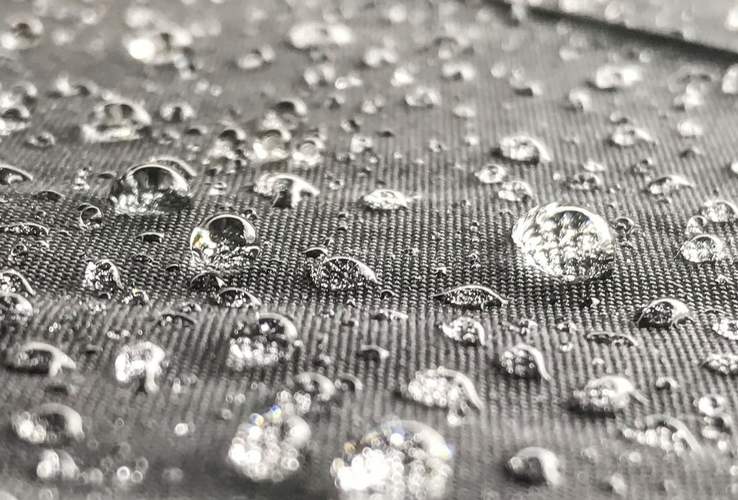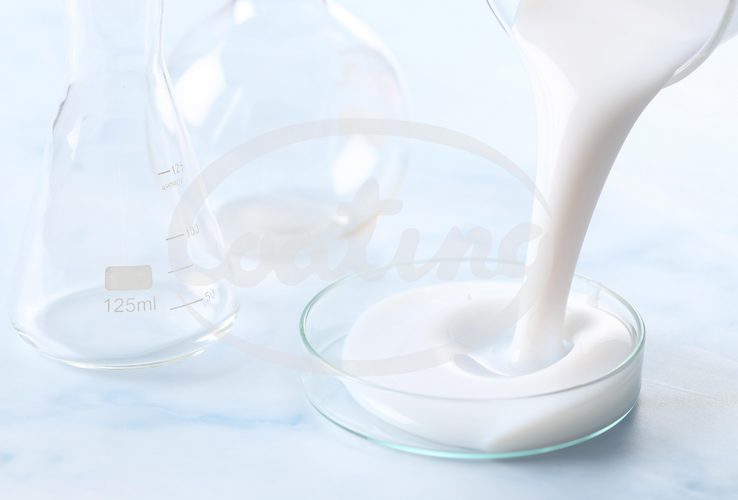Textile coatings go green- the application of waterborne polyurethane dispersions
Clothing is a necessity in our daily life. It satisfies our needs for wearing on various occasions, and highlights our status, lifestyle and social performance through clothing styles and designs. With the global cultural trend, aesthetics is no longer the only choice to pursue clothing fashion. Functional clothing which combines functionality, comfort and design has become the mainstream, and it has also promoted the new development of textile fabrics, such as cooling, heat generating, quick-dry, antimicrobial, waterproof and breathable functional fabrics. It not only expands the development of the traditional textile industry, but increases the added value to textiles.

(Image source: pexels)
In order to ensure the comfort of wearing, textiles use coating technology to coat one or more layers of high polymer adhesive on the fabric to form a film on the fabric surface. This film not only enhances the hydrophilic properties of fabric, but also allows the sweat to be quickly removed, and keep the body dry and comfortable. There are many hydrogen bonds in the molecular composition of polyurethane, which makes the intermolecular forces are strong enough to create stronger adhesion, and has stable chemical properties to easily form a film, so it is widely used in textile coating technology. The characteristics of coating layers are film forming on surface, rich hand feel, elasticity, good penetration resistance and abrasion resistance . It breaks the processing restrictions of traditional textiles in style, and increases the functionality of the fabric, such as waterproof, antifouling, windproof, warmth, flame-retardant and anti-radiation functions to raise the uniqueness and added value to textile products.
With increasing awareness of environmental protection all over the world and improvement of environmental protection regulations in various countries, the industry has gradually invested in the advanced materials or processes. In particular, the application of waterborne polyurethane dispersions has come into focus and is widely used on architectural coatings, adhesives, and textile coatings, water-based PU leather, fiber treatment agent, etc. The main reason why waterborne polyurethane dispersions has attracted much attention is that when traditional solvent-based polyurethane is processed, a large amount of volatile organic compounds are generated and discharged into the atmosphere. These toxic substances can have an impact on human health for decades and affect the natural environment and ecology. Therefore, in consideration of humans and environmental safety, most of the industrial products have gradually changed to waterborne polyurethane dispersions, and widely used in the textile processing industry to replace the traditional solvent-based textile coating process. It not only retains the excellent performance of solvent-based polyurethane, such as good flexibility, low temperature resistance and fatigue resistance, also has the advantages of environmental protection, energy saving, safety and easy to process. In addition, it greatly reduces environmental pollution and makes the textile production process more environmentally.
As the increasing requirements of famous clothing brands for materials, the coating technology on fabrics has been innovated. At present, the commonly coating process can be divided into the following:
Coating process
According to the processing method, it can be divided into three types, namely direct coating, foam coating and wet coating process.
-
Direct coating process: Directly apply the prepared water-based adhesives coating on the fabric surface with a knife or roller coating machine, which is commonly used in textile manufacturing.
-
Foam coating process: The water-based adhesives are physically foamed into foam and coat on the fabric surface with a coating machine. There are a large amount of pores in the foam structures with sponge-like layer and has good rebound, gentle and volume hand feel, but due to the difficulty of pre-processing, also, it needs a large foaming mixer and the water pressure must be lower than 1000 mm H2O to mass production for coating fabrics.
-
Wet coating process: The water-based adhesives are wet coated on fabric surface andinto an acid-added water tank by which leads to demulsification and then solidify into a film. This process is similar to the solvent-based wet process, and it will cause wastewater treatment problems.
Laminating process
Commonly used for clothing patterns or trademarks, it can be divided into release paper lamination and release fabric lamination. Usually, the water-based adhesives are applied to release paper or release fabric and transferred to the textiles.
Spray process
The water-based adhesives are directly spraying on the fabric, and the coating weight is much less. Used in digital printing on fabrics, different patterns can be customized to replace the traditional printing process and save the cost of plate making.
Waterborne polyurethane dispersions has a wide range of applications in textile coating technology, such as sportswear, down jackets, coats, tents, footwear, luggage, and high-level waterproof and breathable outerwear, windbreakers, etc. The following examples are the performance requirements of tent fabrics and technical outerwear:
Tent fabrics
When mountain climbing and camping may encounter rain or humid weather, it is important that tent is waterproof to prevent this situation. The tent with waterproof coating could effectively block rain water. Waterproof coating process uses solvent or water to mix plastic materials into thick liquid glue, and use rotary screen, scraper or roller type machine to evenly coat adhesive on fabric surface, and then cure it at proper temperature in the oven to form a waterproof coating film.
Polyurethane coating fabrics have a rich hand feel and elasticity and the formed film has a good waterproof performance. Even in extreme cold weather, the hand feel of fabrics will not become hard. Tent waterproof ability is mainly measured by the waterproof rating, which means what a tent with water proof coating can endure maximum hydrostatic pressure per unit area before it starts to leak. The waterproof rating can be divided into the followings:
|
Waterproof Rating (mmH2O) |
Level of water resistance |
Types of tents for events |
|
800-1,200 mmH2O |
Low water resistance, preventing light to moderate rain |
Recreational camping Tent |
|
1,500-3,000 mmH2O |
Moderate water resistance, preventing moderate to heavy rain |
Family camping tent |
|
3000+ mmH2O |
High water resistance, being used in various environments |
High Performance and multipurpose tent |
|
5000+ mmH2O |
Highest water resistance, being used in extreme weather |
Alpine tent |
Technical outerwear
Technical outerwear is mainly used outdoors and must have the function of sheltering wind and rain, whether you’re mountain climbing or just braving the drizzle on your morning commute. Thus, they are made of innovative fabrics to serve a specific function, such as waterproof and breathable. There is a layer of polyurethane film in the fabric to prevent water droplets and cold wind from penetrating into the inner layer. In the meantime, the water vapor could be removed to the outside. And also, it has the characteristics of scratch resistance and wear resistance.
In recent years, people have become more and more enthusiastic about outdoor sports and tourism, while also increase the requirements for outdoor clothing. Technical outerwear can be divided into Level I and Level II according to outdoor scene requirements, Level I is used for professional outdoor activities; Level II has lower functionality than Level I and can meet daily leisure activities. There are three indicators to measure the performance of technical outerwear, namely hydrostatic pressure, water resistance and breathability . The indicators are as follows:
|
Test Item |
Level I |
Level II |
|
|
water resistance (grade) |
Before laundering |
≥4 |
≥4 |
|
After laundering |
≥3 |
N/A |
|
|
pressurehydrostatic (kPa) |
Before laundering |
Fabric≥50 |
Fabric≥30 |
|
After laundering |
Fabric≥40 |
Fabric≥20 |
|
|
Breathability |
Before laundering |
≥5000 |
≥3000 |
|
After laundering |
≥4000 |
≥2000 |
|
|
Data information: |
|||
After years of development, waterborne polyurethane dispersions has gradually stabilized in manufacturing process and there are no pollution problems. In order to meet the needs of functional textile, diversified development, multi-functional and high-quality coating fabrics are undoubtedly the main points in the future. So as to make the waterborne polyurethane dispersions coating fabrics have sufficient water pressure resistance, the film-forming property of coating layer on fabrics is the key point, which can be discussed and treated according to the following suggestions:
-
Viscosity controlled above 10000 cps/25℃: If viscosity is insufficient, the adhesives are easily absorbed into the fabric fibers during coating, which makes it unable to form a film on the surface, resulting in poor water pressure resistance. And even the fabric's hand feeling will become hard due to absorption of excessive adhesives.
-
Adhesives must be filtered after mixing: If there are undissolved impurities in the container or the adhesive is not well filtered, it will easily lead to incomplete coating layer.
-
Reduce bubbles generated during coating process: Bubbles are the main culprit in reducing the strength of water pressure resistance. Therefore, an appropriate amount of antifoaming agent can be added when blending adhesives. Through vacuum mixing process, it could help reduce the bubbles.
-
Reduce CO2 gas production: Polyurethane is easy to generate CO2 gas when drying in the oven. So it is necessary to avoid a large amount of coating at one time, and to gradually increase the temperature in the oven at a low temperature to reduce bubble traces generated during coating and drying process.
-
The treating agent or additives added on the fabric surface may also affect the coating quality. It must be evaluated according to the actual processing situation.
With emphasis on sustainable environmental issues, famous brands have begun to incorporate the concept of environmental sustainability into clothing design. Regardless of the manufacturing process or products must meet ecological, environmental, health and safety requirements. With regard to the application of soft coating fabrics, various manufacturers have changed to fluorine-free water repellents instead of harmful perfluorinated compounds (PFCs) , but such change greatly decrease the bonding strength of coating. CPMC has leading technology to develop the water based polyurethane solution product, WD-5009F, which solves poor adhesion issues caused by fluorine-free water repellents. WD-5009F has various characteristic of high water pressure resistance, excellent coating adhesion, and it is not easy to whiten after rubbing fabrics and has a soft hand feel. Thus, it could satisfy the environmentally sustainable product manufacturing concept.
Technology has profoundly changed our daily lives, and driven people’s awareness of pursuing health and building lifestyle diversity, which have also contributed the market demand for functional sportswear. The application of waterproof and breathable coatings has become hot tops of development and research in the textile industry. Promoting innovative coating technology in waterborne polyurethane dispersions, CPMC also has launched special waterproof and breathable coating solutions (WD-5038 used in base layer used, WD-5038F used in top layer) for hydrophilic non-porous PU films , which have high water pressure resistance and soft hand feel. These products are suitable for solvent-based processing equipment, and can be transformed to water-based polyurethane coating technology. It has not only effectively reduced VOCs emissions, but moved toward to green products to achieve sustainable future. For more product information, please feel free to【contact us】。


